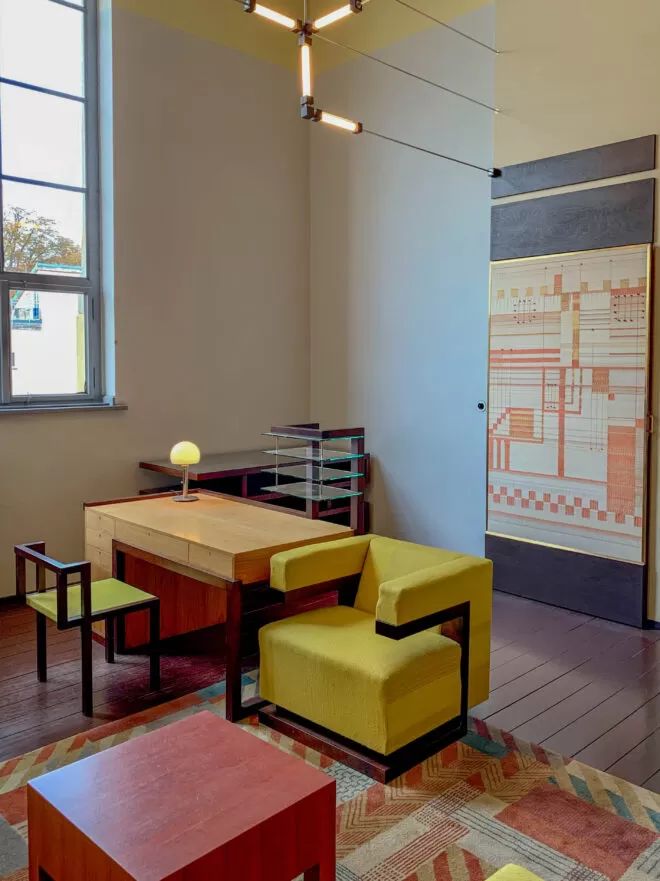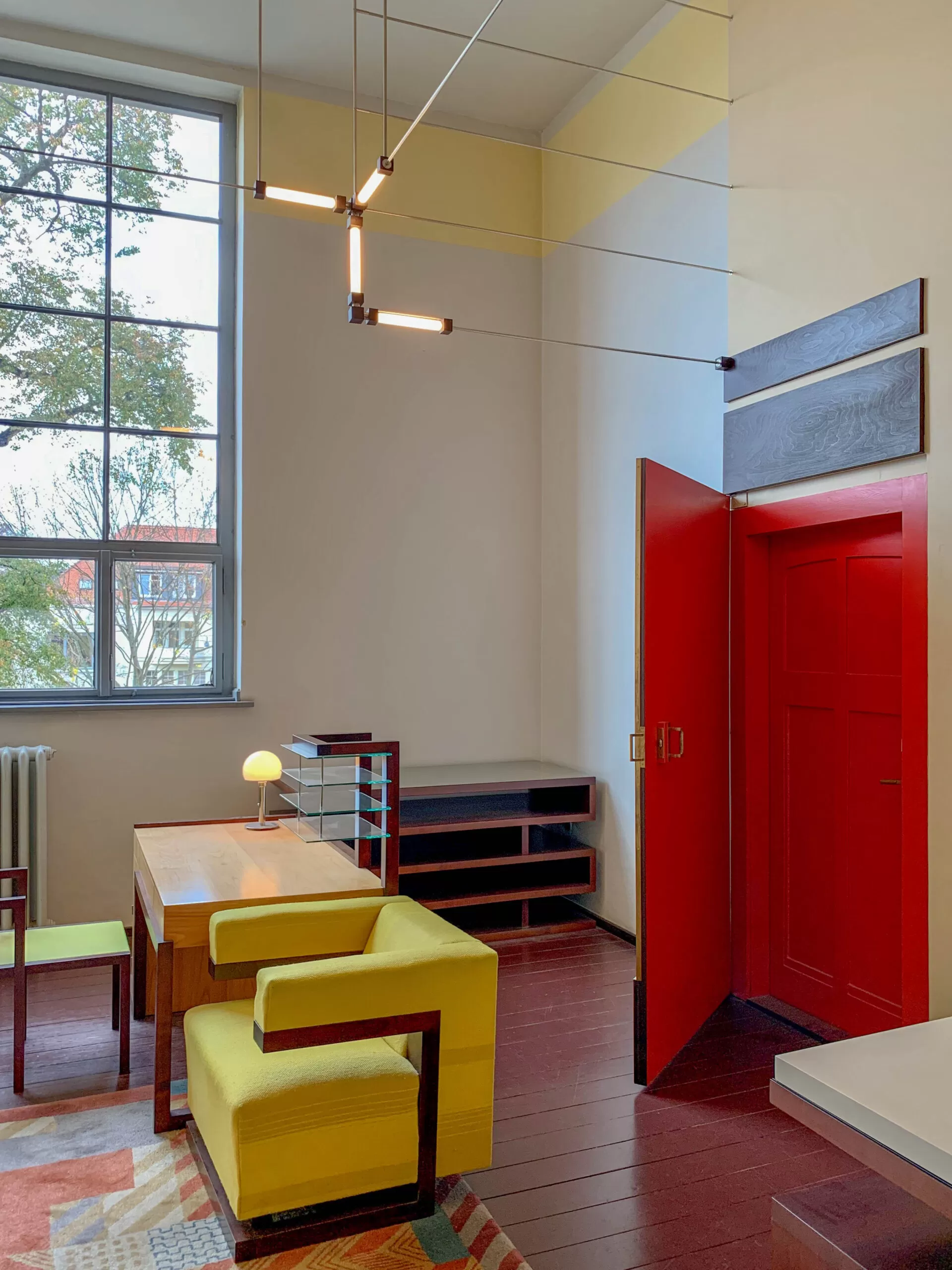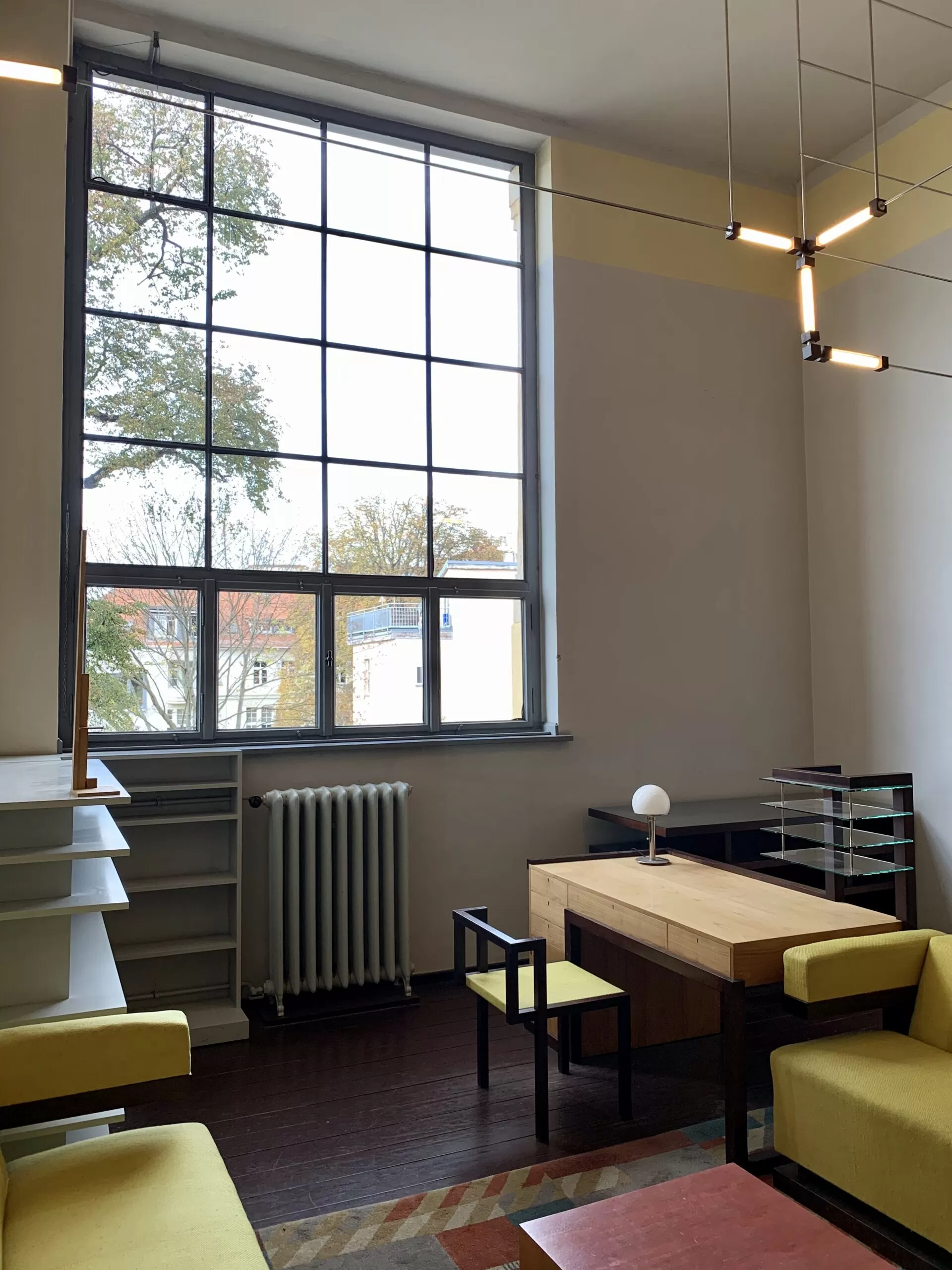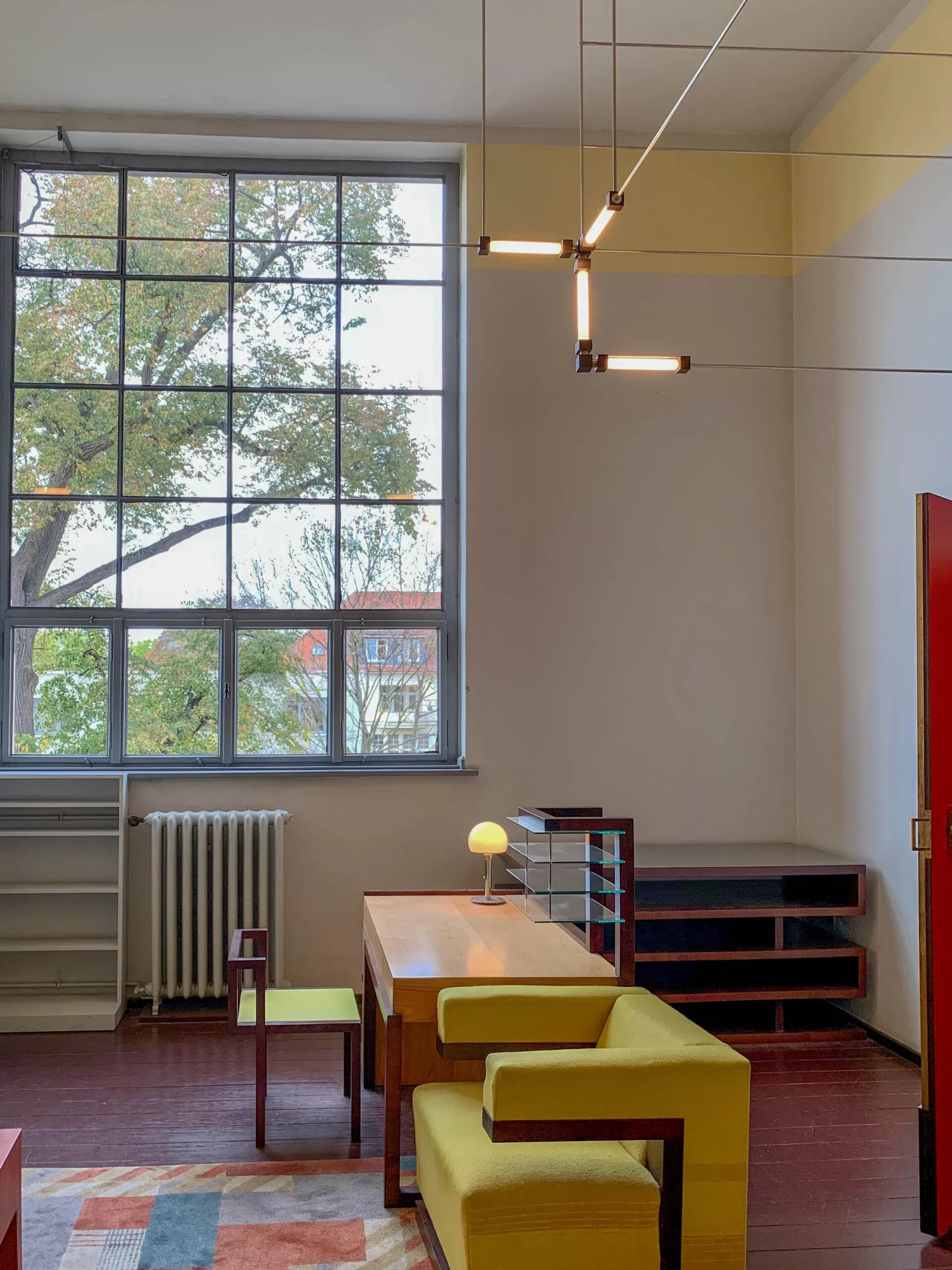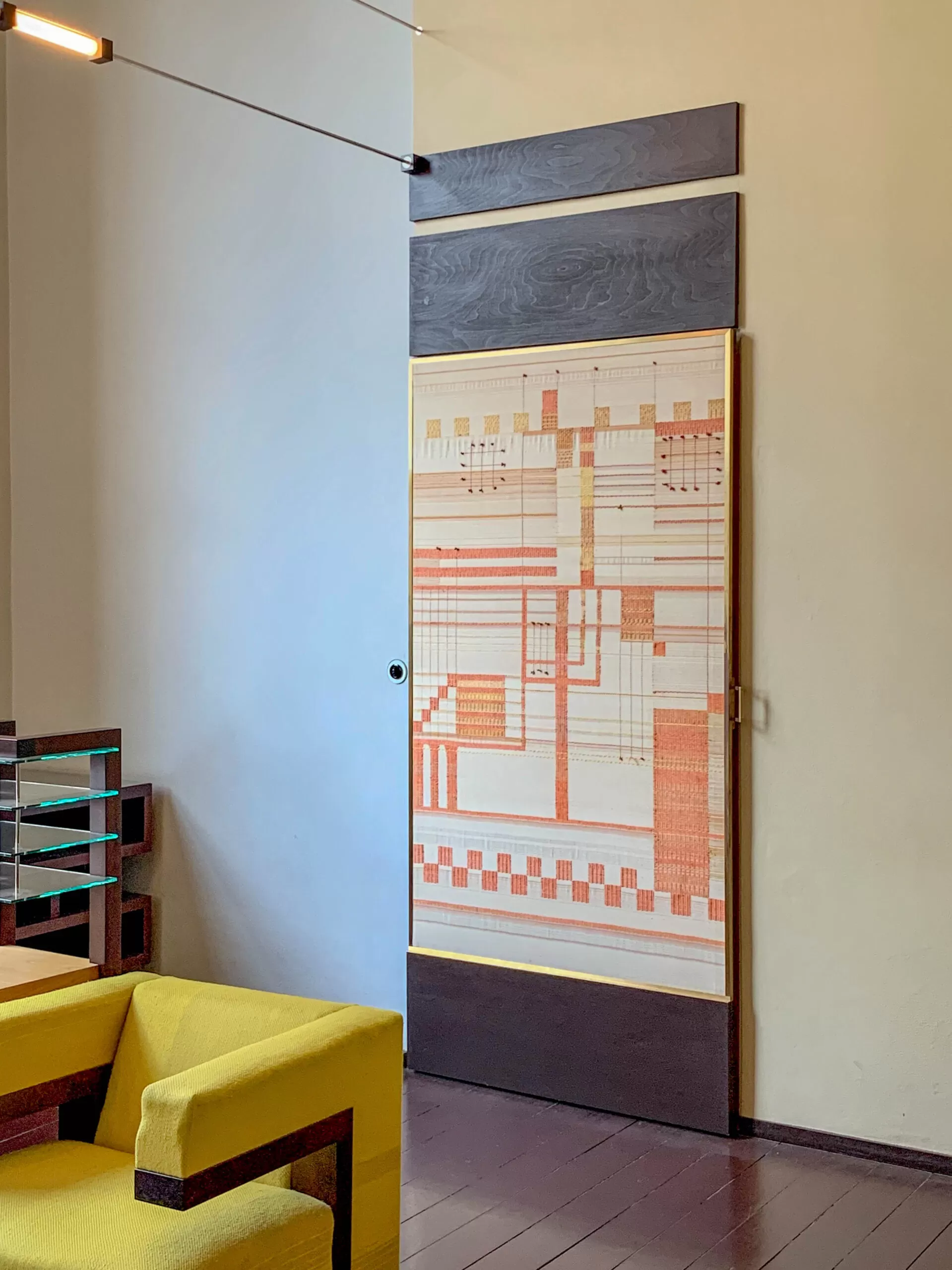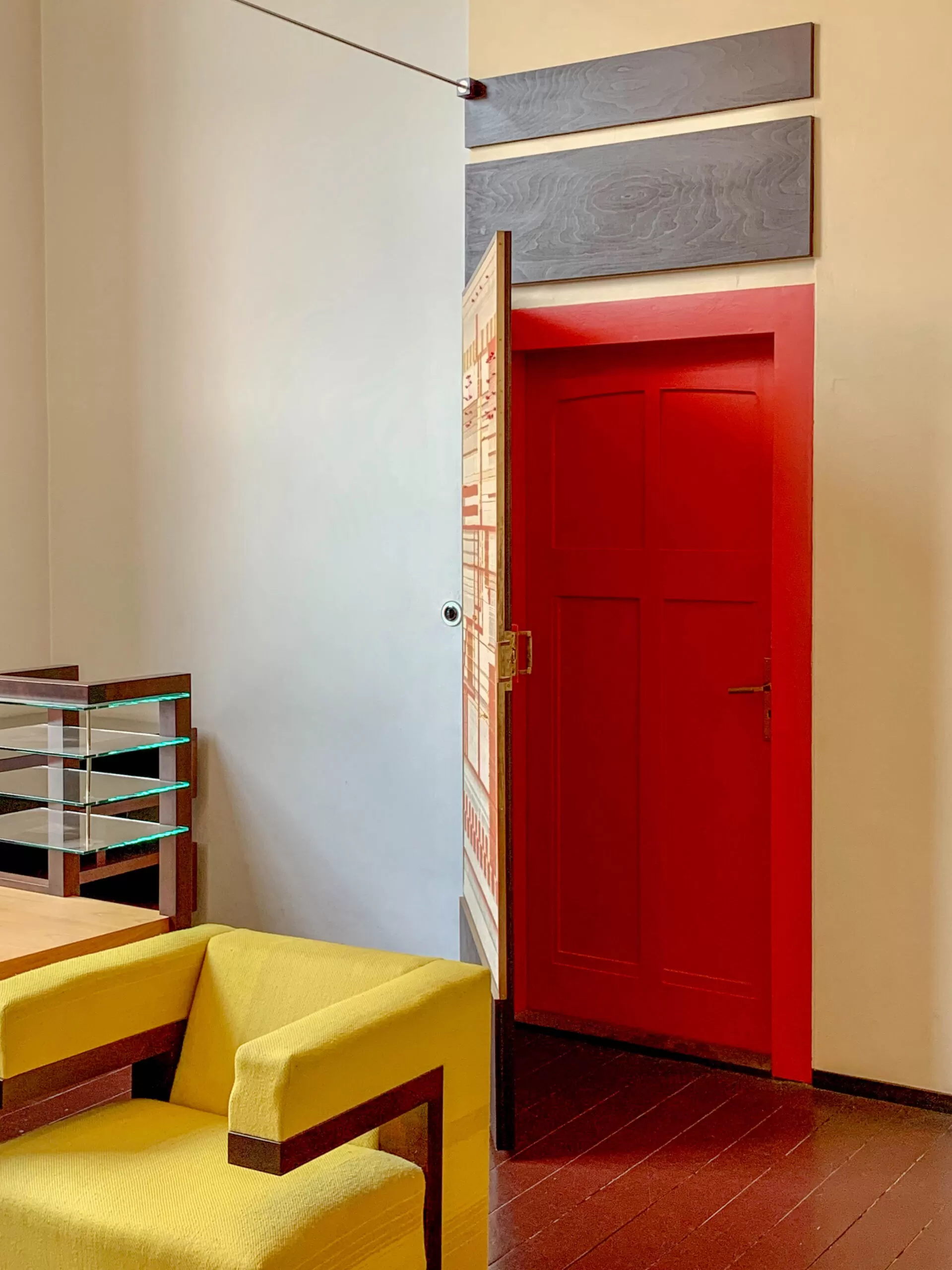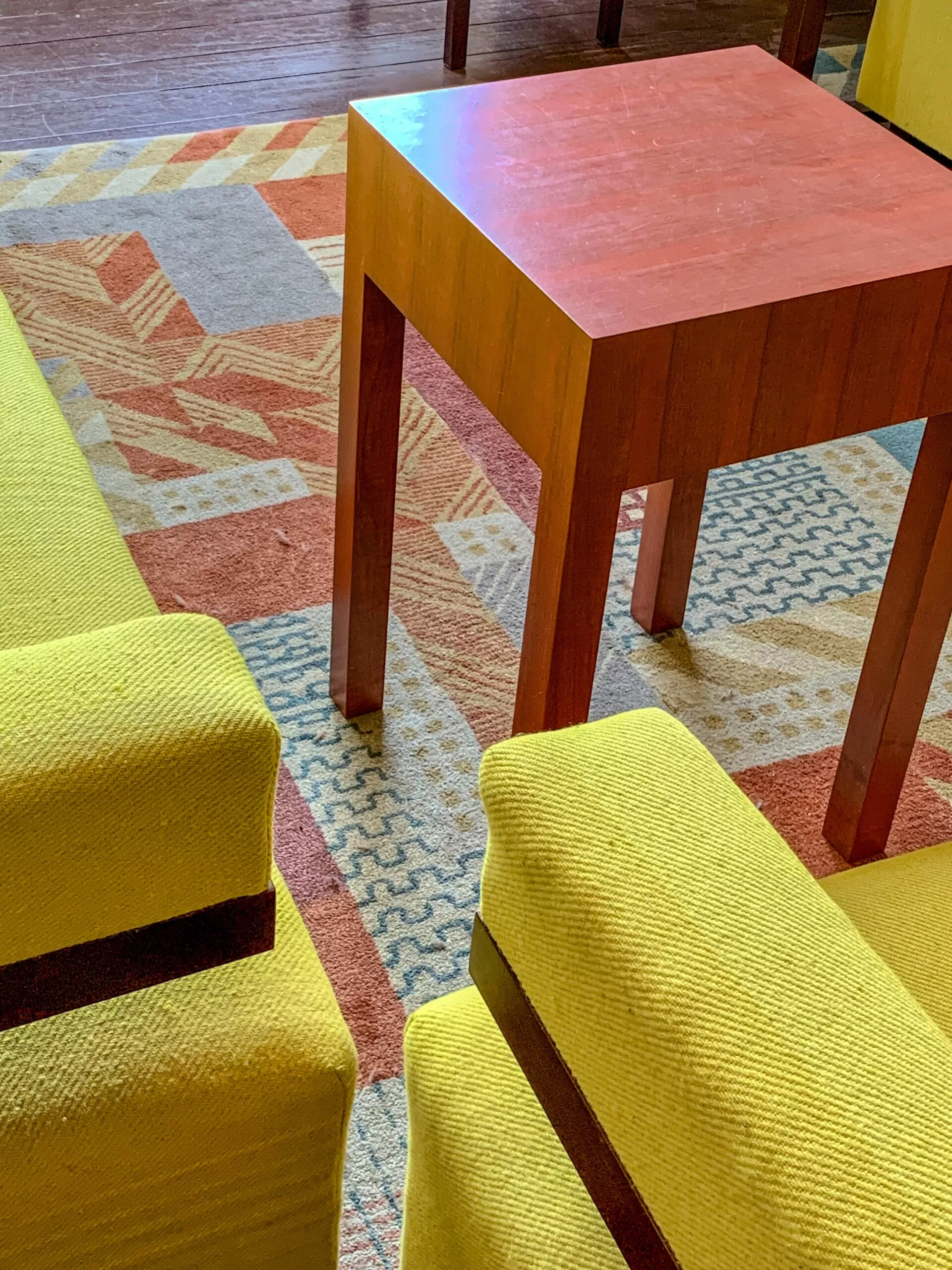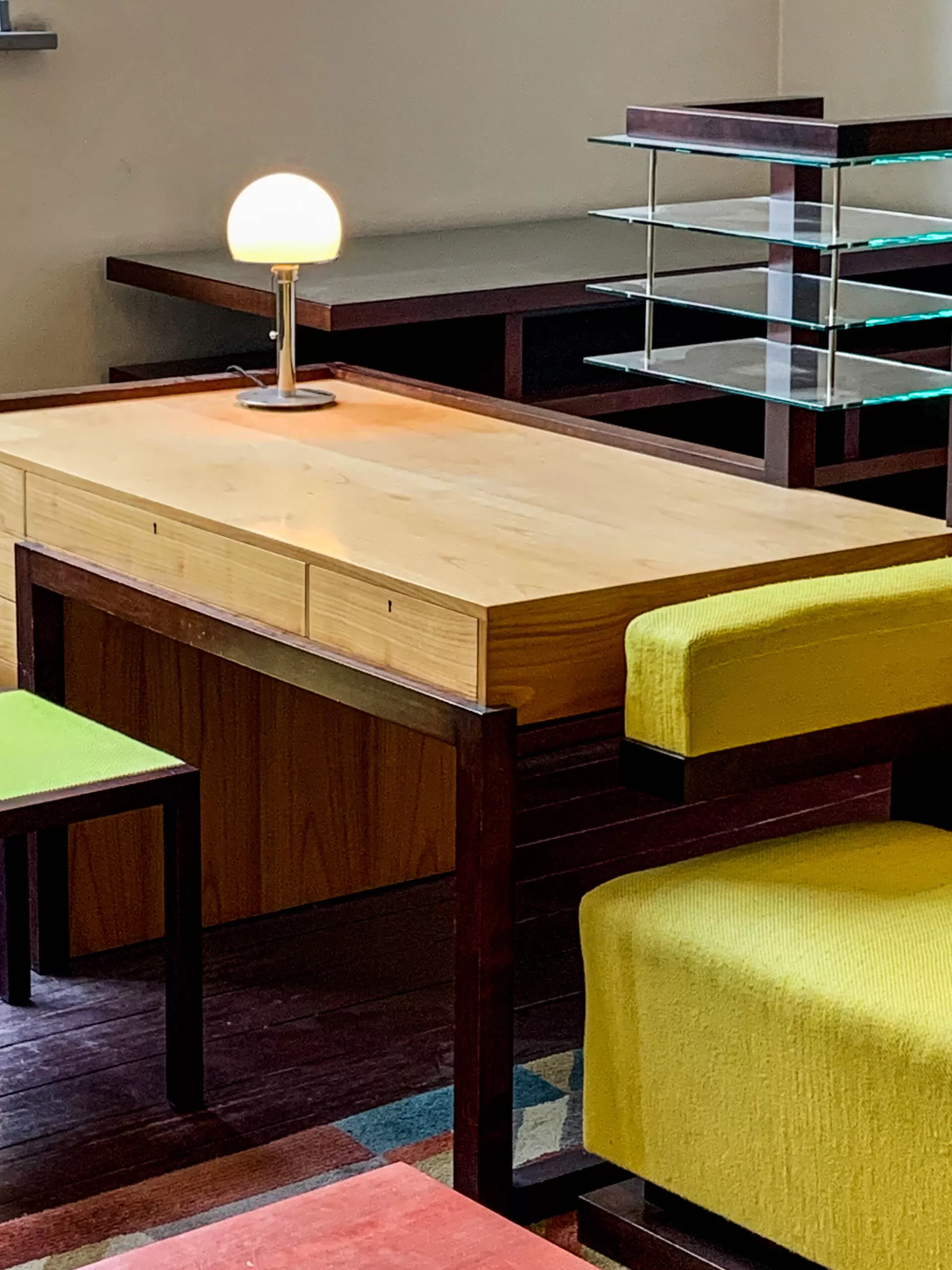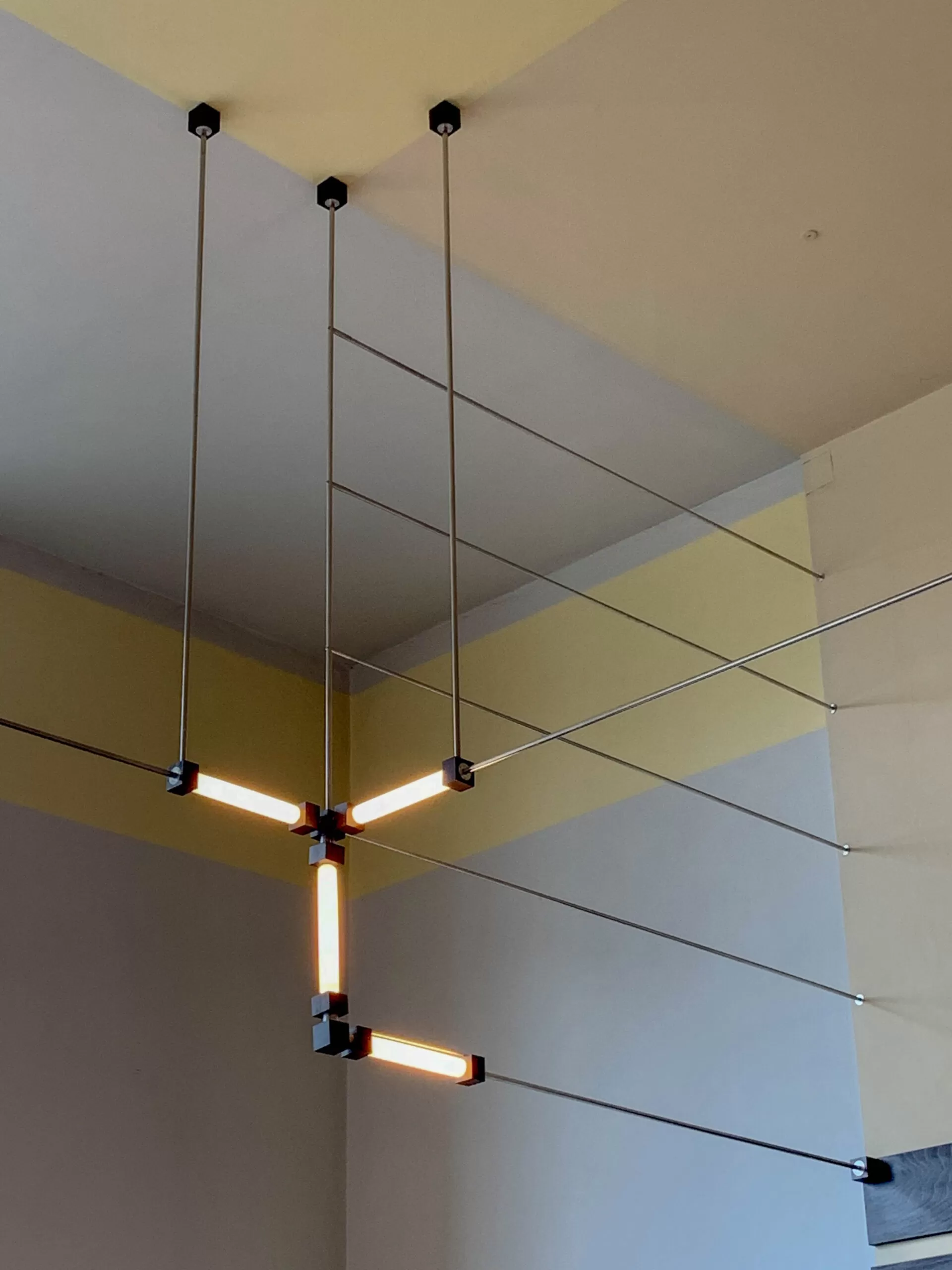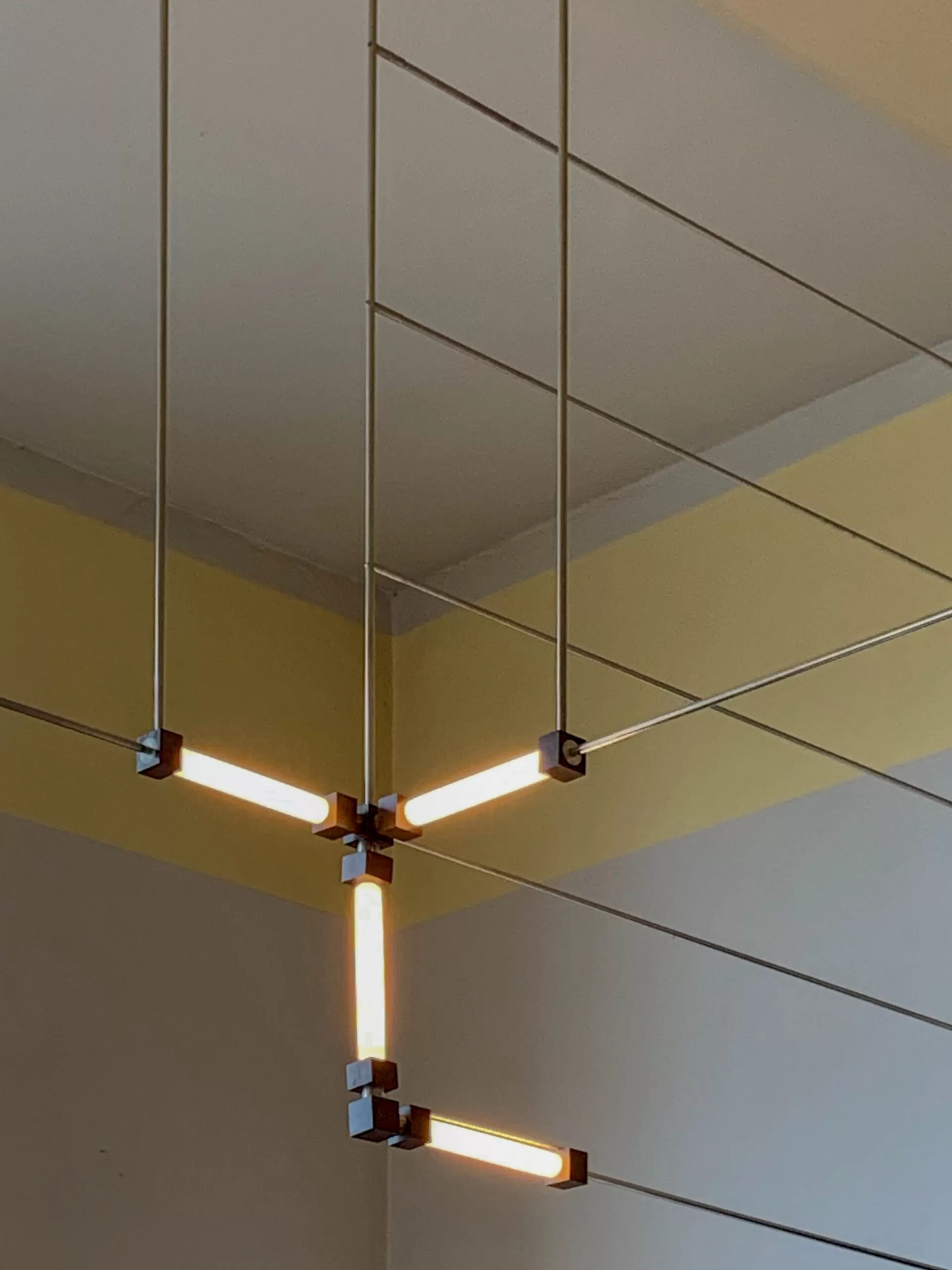1923 (reconstructed)
Design: Walter Gropius
Geschwister-Scholl-Strasse 8, Weimar, Germany
Bauhaus University Weimar
The listed Gropius Room in Weimar is considered the first holistic spatial concept of classic modernism.
In the course of the renovation of the main building in 1997, the Bauhaus University Weimar had decided to reconstruct the former director’s room, which Walter Gropius had designed for the Bauhaus Exhibition in Weimar in 1923, and to furnish it as a usable working space.
Since its founding in 1919, the Bauhaus had repeatedly been subjected to massive public criticism. In June 1922, the Thuringian state government granted the Bauhaus a loan with the condition that it present the results of its work to the public in an exhibition.
Bauhaus Exhibition 1923
A first exhibition concept was available in September 1922. In October 1922, a commission was appointed within the Bauhaus to organize the exhibition, which included the masters Oskar Schlemmer, Georg Muche and Josef Hartwig as well as the journeyman Kurt Schwerdtfeger and the apprentice Marcel Breuer.
The exhibition was advertised in 120 German train stations with a poster designed by Joost Schmidt and produced in the Bauhaus printing house, featuring Oskar Schlemmer’s Bauhaus signet.
The Bauhaus Exhibition of 1923 was the first public presentation of the State Bauhaus. It took place from August 15 to September 30, 1923, at three locations in Weimar and featured works created at the Bauhaus. The exhibition sites were the buildings of the State Bauhaus, the State Museum and the model house Am Horn. The six-week exhibition had about 15,000 visitors.
Gropius Room
The Gropius Room, rectangular in origin, was partitioned off into a 5 x 5 x 5m cube.
Within this room, Gropius defined another cube as a resting zone through the square carpet and the thoughtful arrangement of the furniture.
Additionally, this space was marked in height within the room by the sofa lighting. The influence of the artist group De Stijl can be clearly seen in this constructivist light object, whose design is influenced by Gerrit Rietveld.
The latter had designed the so-called lamp L40 for the consulting room of the doctor Dr. Hartog in Maarssen (Netherlands) in 1922.
Rietveld’s groundbreaking ceiling lamp consisted merely of three bare soffite tubes suspended from their own mains cable.
The Gropius Room was created at the end of the phase at the Bauhaus marked by Expressionism.
At this point, the transition to constructivist and functionally determined design was already apparent, at a time when Gropius himself, as Bauhaus director, was instrumental in driving this change of direction.
The carpet in the director’s room is a design by Bauhaus student Benita Otte.
When the Bauhaus moved to Dessau, Gropius took the furnishings with him.
He partially incorporated it into his new office, which was designed in a more functional style.
The original desk is now in his former home in Lincoln (USA).
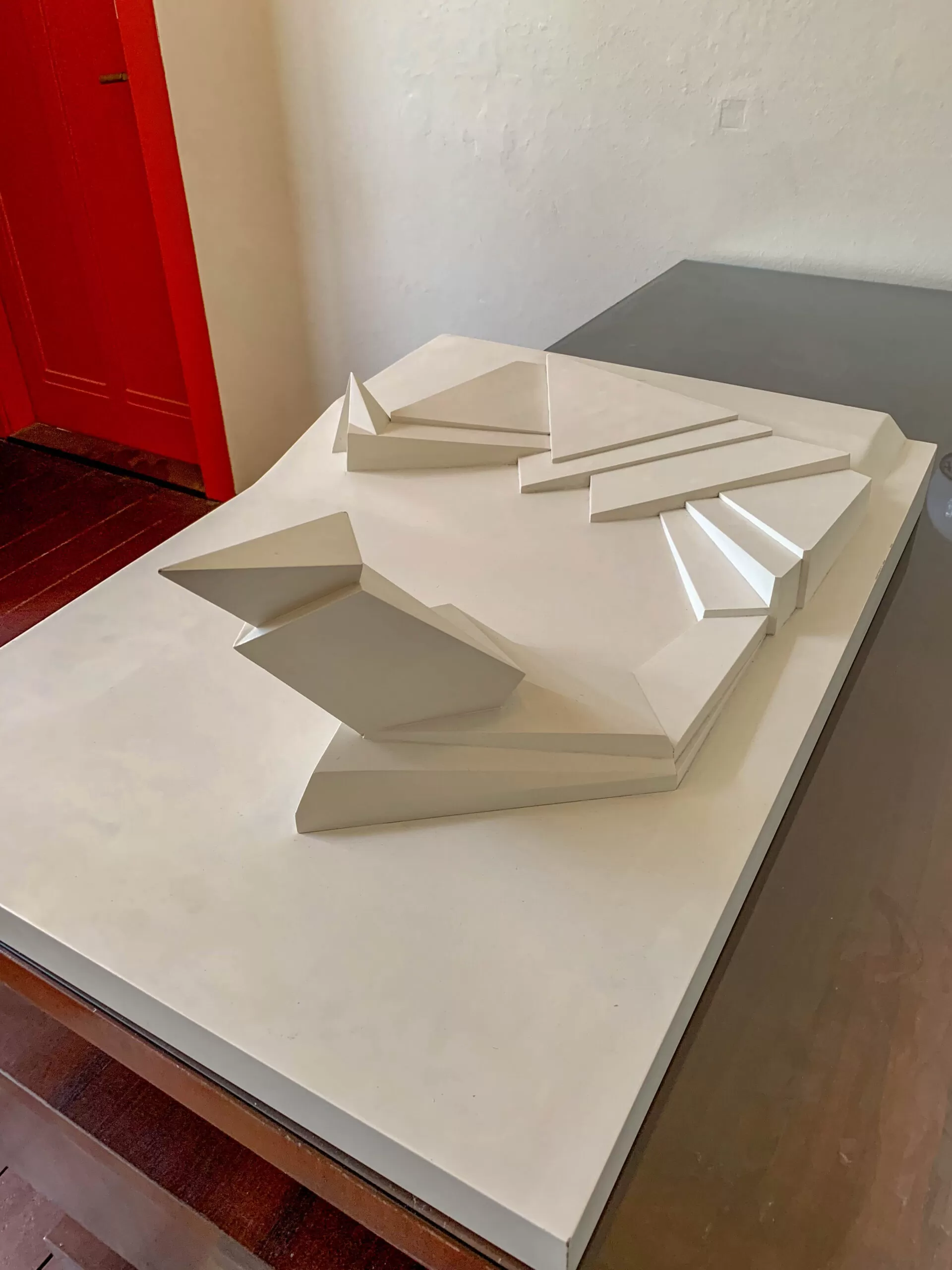
Model of the March Fallen Monument. Director’s Office, 1923. Design: Walter Gropius. Photo: Daniela Christmann

